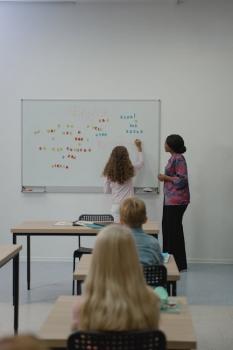How the Supreme Court's Latest Ruling Could Reshape School Curricula Nationwide

How the Supreme Court's Latest Ruling Could Reshape School Curricula Nationwide
What happens when the highest court in the land makes a decision about education? Why should parents, teachers, and students care about a legal ruling that may seem distant from classroom realities? How might a single Supreme Court decision alter what millions of American children learn in school? These questions lie at the heart of a groundbreaking legal development that could transform educational content across the United States.
The Landmark Ruling Explained
In a decision that sent shockwaves through educational circles, the U.S. Supreme Court recently issued a ruling that directly impacts how schools approach curriculum development. The case, which centered on First Amendment rights in educational settings, establishes new parameters for what content schools can—and cannot—include in their instructional programs.
The ruling essentially states that school districts must demonstrate a compelling educational justification for including or excluding specific materials, particularly when dealing with controversial topics. This creates a new legal standard that could force schools to reevaluate everything from history textbooks to literature selections.
For example, a school district in Texas recently had to defend its inclusion of certain civil rights movement materials after parents objected. Under this new ruling, such cases may become more frequent and legally complex.
Immediate Impacts on Classroom Instruction
The practical effects of this decision are already being felt in schools across the nation. Curriculum committees are scrambling to review their materials, and teachers are receiving new guidance about what they can discuss in class. The ruling particularly affects subjects like history, social studies, and literature where controversial topics frequently arise.
One immediate consequence is that school districts must now document their rationale for curriculum choices more thoroughly. This means creating detailed records explaining why certain books are included in reading lists or why specific historical events are emphasized over others.
In Florida, several school districts have temporarily suspended their African American history electives while they review whether the courses meet the new legal standards. Similar pauses in curriculum implementation are occurring nationwide as educators seek legal clarification.

The Free Speech Debate Intensifies
At its core, this Supreme Court ruling reignites the longstanding debate about free speech in educational settings. The decision walks a fine line between protecting students' right to access information and allowing communities to shape their educational priorities.
Legal experts note that the ruling creates a new test for curriculum challenges. Previously, courts generally deferred to school boards on educational content decisions. Now, schools must show that their choices serve specific educational goals and aren't merely based on political or ideological preferences.
A recent case in Virginia illustrates this shift. When parents challenged the inclusion of LGBTQ+ literature in high school English classes, the school district had to demonstrate how these texts served legitimate educational purposes related to literary analysis and understanding diverse perspectives.

Potential Consequences for Marginalized Histories
One of the most significant concerns arising from this ruling is its potential impact on marginalized histories. Educators worry that already vulnerable topics—like the history of slavery, Native American displacement, or civil rights struggles—might face increased scrutiny or removal from curricula.
The ruling could create a chilling effect, where schools avoid controversial but educationally valuable content to prevent legal challenges. This might lead to sanitized versions of history that omit important but uncomfortable truths about America's past.
In Oklahoma, some teachers report self-censoring their lessons about the Tulsa Race Massacre, fearing that the graphic details might prompt legal challenges under the new standard.

Long-Term Implications for Educational Policy
Looking beyond immediate classroom impacts, this Supreme Court decision could reshape educational policy for years to come. It establishes a precedent that may influence everything from textbook adoption processes to teacher training programs.
The ruling effectively shifts the burden of proof in curriculum disputes. Where previously challengers had to demonstrate that materials were inappropriate, now schools must proactively justify their inclusion of potentially controversial content.
Several states have already announced plans to revise their curriculum approval processes in response to the decision. New York's education department, for instance, is developing new guidelines to help districts navigate the changed legal landscape.
Navigating the New Normal: Recommendations for Educators
In this new legal environment, educators need strategies to maintain academic freedom while complying with the Supreme Court's ruling. Legal experts and educational organizations are offering guidance to help schools adapt.
Key recommendations include:
- Developing clear, documented rationales for all curriculum choices
- Creating transparent processes for handling challenges
- Providing professional development on the new legal standards
- Establishing curriculum review committees with diverse perspectives
The National Council for the Social Studies has issued model guidelines showing how schools can continue teaching difficult histories while meeting the Supreme Court's requirements.







